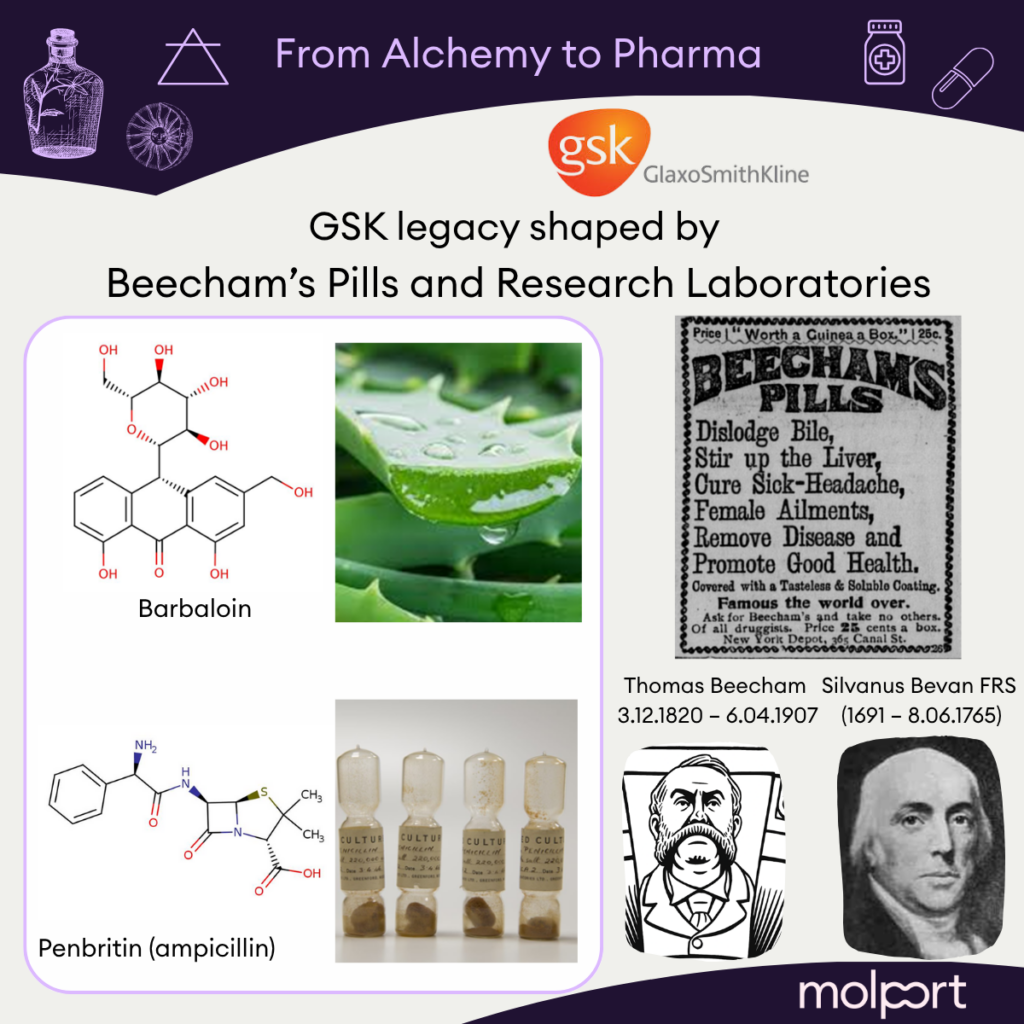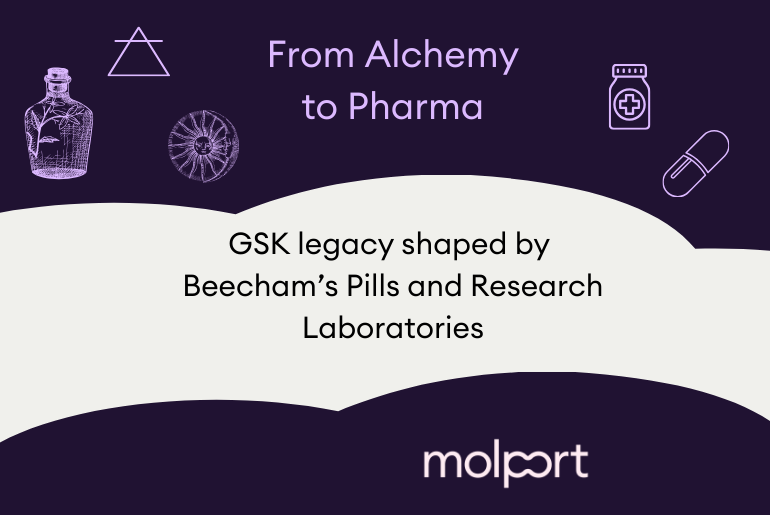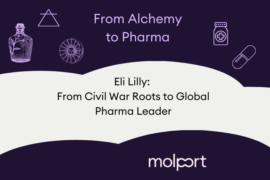GSK legacy shaped by Beecham’s Pills and Research Laboratories
GSK’s earliest roots include Plough Court Pharmacy, founded in London in 1715 by Silvanus Bevan, which later evolved into Allen & Hanburys, well known for its pioneering work in respiratory medicines. However, thanks to Beecham’s Pills, launched in 1842 by Thomas Beecham (1820–1907), the company experienced a tremendous financial boost that drove its early success and enabled its growth into a primary pharmaceutical business. These popular over-the-counter laxatives — made with ingredients like aloe, ginger, and soap — owed their effect mainly to the anthraquinones in aloe, specifically aloin (also known as barbaloin).
In the 1950s, the Beecham company made a significant leap into modern pharmaceuticals by establishing one of the world’s first dedicated antibiotic research labs, becoming a pioneer in penicillin development. Beecham Research Laboratories’ involvement with penicillin began with the discovery of the penicillin nucleus, 6-aminopenicillanic acid (6-APA), by its scientists in 1959 at Brockham Park. This breakthrough enabled the synthesis of new semisynthetic penicillins, advancing the field of antibiotics.
Building on this, the Beecham company developed and marketed several essential penicillin-based drugs, including Broxil (phenethicillin), Celbenin (methicillin), and Penbritin (ampicillin) — firmly establishing its position as a leader in antibiotics. This remarkable evolution, from a simple patent medicine to groundbreaking antibiotic research, helped shape the legacy that lives on today as GlaxoSmithKline (GSK), one of the world’s largest and most influential biopharmaceutical companies.

Other Molport Chronicles posts- from Alchemy to Pharma:





